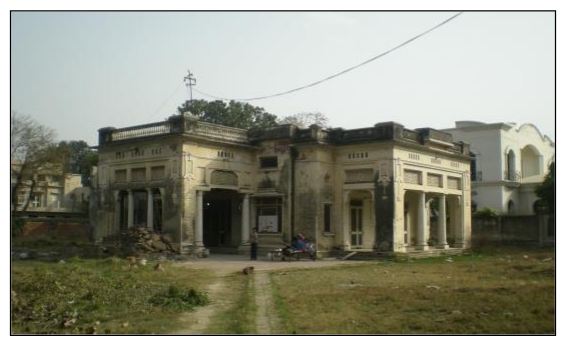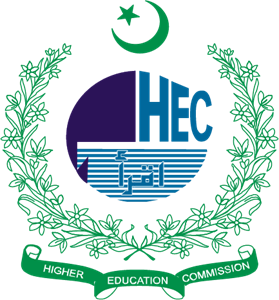Architectural Education as Interface between Culture and Built Environment
Abstract
 Abstract Views: 458
Abstract Views: 458
The main focus of this paper is the discussion about non-coherent appearance of built environment in Pakistan that does not reflect the culture of society, but external influences more than natives. Being a part of a larger territory in yester centuries, the country is influenced heavily by external factors and deliberated efforts for “modernization” since after a decade of independence in 1947. Many parts of the subcontinent including India and Pakistan are influenced by Modernist trends in architecture that are evident in the built environment. The probability of inclusion of many diversified attributes of culture over a considerable period of time has been increased. It is therefore important to discuss the most relevant possibilities through which these influences were adopted and then were translated in the built environment. These influences are assumed to be translated through the taught content in the architectural education in the country.The paper also discusses the relationship of three entities; Culture, Built Environment and Architectural Education. It takes into account some examples of residences from Pakistan to analyze the interfacing capacity of culture and built environment. It adopts the methodology of qualitative study through literature and evidences from some cities of Pakistan to seek the validity of argument. It also relates the role of curriculum driven architectural education in the process of built environment. The findings reveal that the existing form of culture has grasped external influences in a subtle manner adopting a new form which appears as non-coherent to the generally perceived one. The role of architectural education in this regard holds a pivotal position in relation to the built environment. The findings established also connote architectural education as the interfacing factor of culture and built environment.
Downloads
References
Bonsdorff, P. V. (n.d.). Architecture and the education: The question of expertise and the challenge of art. Retrieved from https://www.playce.org/uploads/pdf/8%20Pauline%20von%20Bonsdorff.pdf
Canberra. (2014). Canberra accord rules and procedures. UIA/UNESCO Charter for Architectural Education. Retrieved from http://www.unesco.org/most/uiachart.html
De Munck, B., Winter, A. (2012). Gated communities: Regulating migration in early modern cities (Illustrated, Revised, Surrey). Ashgate Publishing.
Hasan, A. (1984, September 28-29). Workshop on architectural education. Engineering University, Lahore.
Hasan, A. (1995). The architect and the built environment. Retrieved from http://www.arifhasan.org/articles/articles/the-architectandthebuiltenvironment
Higher Education Commission of Pakistan. (2014). Curriculum of B. Architecture. Author.
Iqbal, M. (1984). Lahore past and present (2nd ed.). The Punjabi Adbi Academy.
Naz, N. (2010). Development of architectural education in Pakistan: A historical perspective. Global Built Environment Review, 7(2), 6-19.
Rappoport, A. (2014). On the relation between culture and environment. Retrieved from http://www.cmu.edu/ARIS_3/text/text_rapoport.html
RIBA. (2005). Constructive change: A strategic industry study into future of the architect's profession. Retrieved from http://www.architecture.com
Rudofsky, B. (1987). Architecture without Architects: A short introduction to non-pedigreed Architecture. University of Mexico press.
Salama, A., & O’Reilly, W. (1998, April 6-8). Incorporating knowledge about cultural diversity into Architectural Pedagogy. Paper presented at the Architectural Knowledge and cultural Diversity Proceedings from the 5th Colloquium on Architecture and Behavior, Ascona, Switzerland.
Till, J. (2012). How will architects be educated in 20 years time? Retrieved from http://www.jeremytill.net/read/97/how-will-architects-be-educated-in-20-years-time
Tylor, E. (1970). The origins of culture:Repr of primitive culture Ch I-X (2nd ed.). Jhon Murray.
UIA/UNESCO. (2005). Work program 'education': UIA/UNESCO Charter for Architectural Education. Retrieved from http://www.unesco.org/most/uiachart.html

Copyright (c) 2019 Yasira Naeem Pasha, Shahla Adnan

This work is licensed under a Creative Commons Attribution 4.0 International License.
JAABE follows an open-access publishing policy and full text of all published articles is available free, immediately upon publication of an issue. The journal’s contents are published and distributed under the terms of the Creative Commons Attribution 4.0 International (CC-BY 4.0) license. Thus, the work submitted to the journal implies that it is original, unpublished work of the authors (neither published previously nor accepted/under consideration for publication elsewhere). On acceptance of a manuscript for publication, a corresponding author on the behalf of all co-authors of the manuscript will sign and submit a completed Copyright and Author Consent Form.
Copyright (c) The Authors





